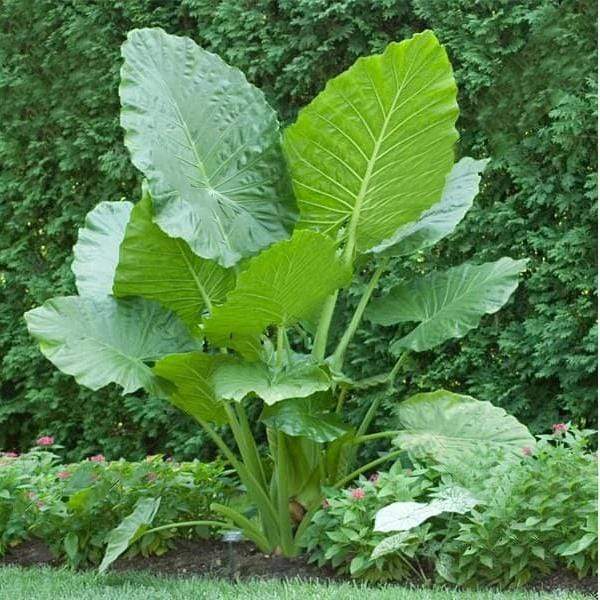
Alocasia macrorrhiza - Plant
(MRP Inclusive of all taxes)
- Shipping ₹79 for entire order
- Dispatch in 7 days
- Country of origin: India

(MRP Inclusive of all taxes)
 Save 29%
Save 29%
Air Purifier Money Plant with Pot The Air Purifier Money Plant, also known as Pothos or Epipremnum aureum, is a stunning indoor plant that...
View full details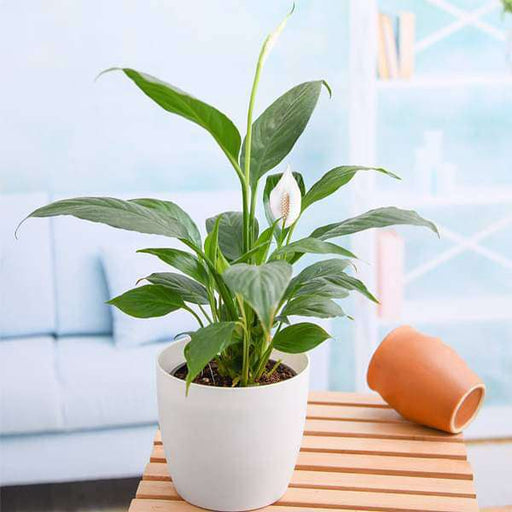
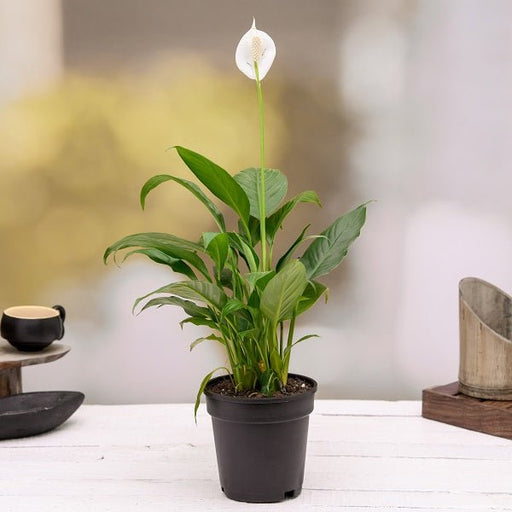 Save up to 15%
Save up to 15%
Peace Lily, Spathiphyllum - Plant The Peace Lily, scientifically known as Spathiphyllum, is a stunning houseplant celebrated for its elegant white...
View full details
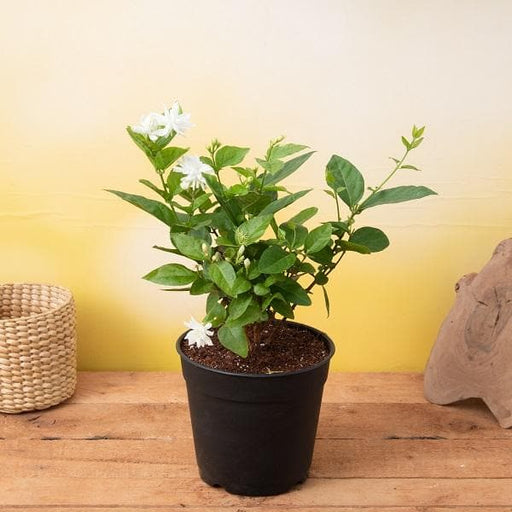 Save 25%
Save 25%
Jasminum sambac, Mogra, Arabian Jasmine - Plant Jasminum sambac, commonly known as Mogra or Arabian Jasmine, is a fragrant flowering plant...
View full details
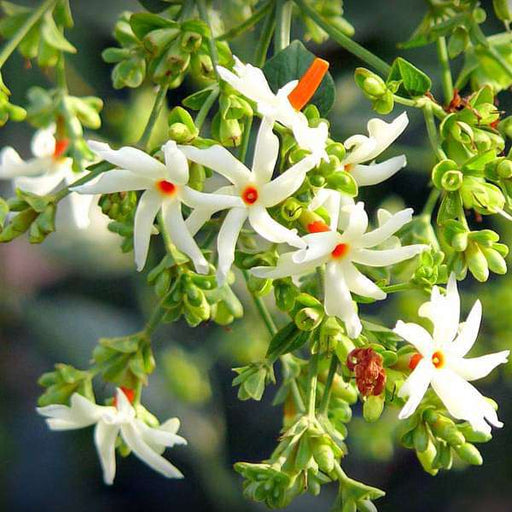 Save 18%
Save 18%
Combo Constituents Includes the Parijat Tree (Night-Flowering Jasmine), a culturally significant plant with fragrant flowers. Description The Pari...
View full details
 Save 25%
Save 25%
Miniature Rose, Button Rose (Any Color) - Plant The Miniature Rose, also known as the Button Rose, is a charming and compact flowering plant that ...
View full details Save 25%
Save 25%
Damascus Rose, Scented Rose (Any Color) - Plant The Damascus Rose, also known as Rosa damascena, is a timeless symbol of beauty and romanc...
View full details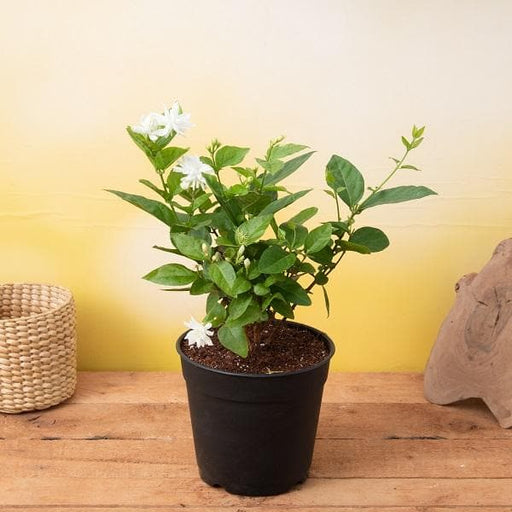
 Save 17%
Save 17%
Beautiful Fragrant Mogra, Arabian Jasmine Plant with Pot The Beautiful Fragrant Mogra, also known as Arabian Jasmine (Jasminum sambac), is...
View full details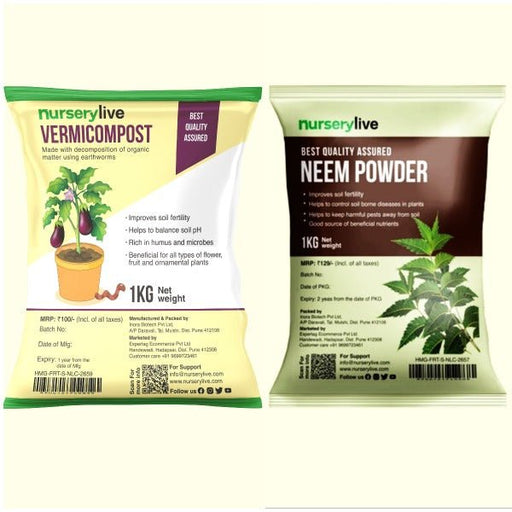 Save 15%
Save 15%
Pack of Vermicompost and Neem Cake for House Plants Transform your indoor garden with our premium Pack of Vermicompost and Neem Cake, spec...
View full details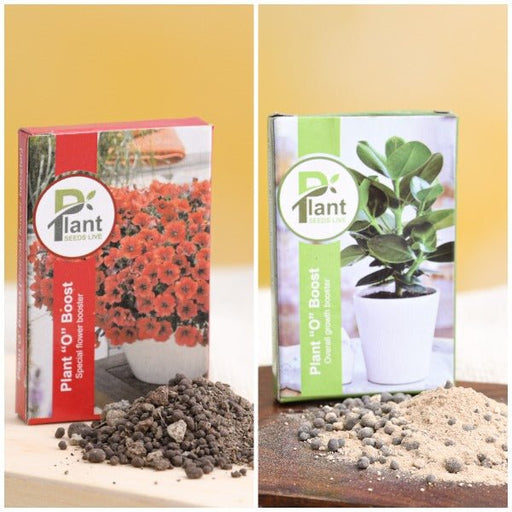
Pack of Plant Growth and Flower Boosters Unlock the full potential of your garden with our Pack of Plant Growth and Flower Boosters! This ...
View full details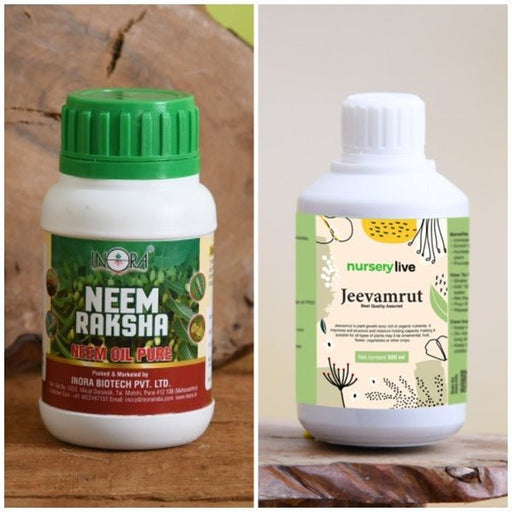 Save 38%
Save 38%
Combo of Jeevamrut and Neem Raksha for Easy Growth and Protection of Houseplants Transform your indoor garden with our exclusive combo of ...
View full details Save 22%
Save 22%
Plant Nutrients Kit (Pack of 16) for a Healthy Garden Transform your garden into a lush paradise with our Plant Nutrients Kit, featuring 1...
View full details Save 16%
Save 16%
Combo of Top Plant Fertilizers Elevate your gardening game with our exclusive Combo of Top Plant Fertilizers, featuring two bags of premiu...
View full details Save 24%
Save 24%
Pack of 4 Additives to Make Soil Healthy and Nutrient Rich Transform your garden into a thriving ecosystem with our Pack of 4 Additives de...
View full details Save 30%
Save 30%
Transform your gardening experience with our premium Combo of Perlite and Vermiculite. This unique blend is designed to enhance soil aeration and ...
View full details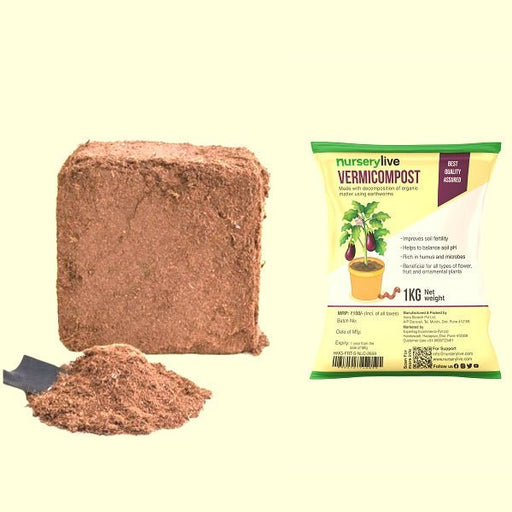 Save 27%
Save 27%
Combo of 2 Vermicompost and Cocopeat - Enrich Your Soil Naturally! Transform your garden into a thriving ecosystem with our Combo of 2 Ver...
View full details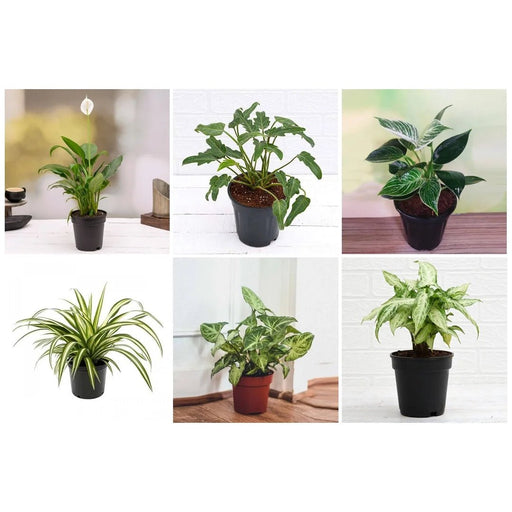
 Save 35%
Save 35%
Best 6 Plants for Perfect Indoor Garden Transform your living space into a lush oasis with our curated collection of the Best 6 Plants for a...
View full details
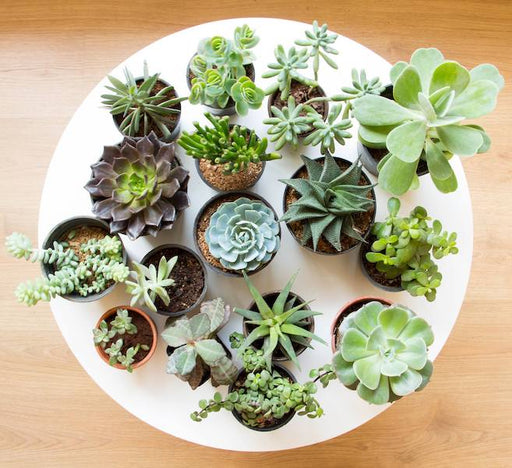 Save up to 50%
Save up to 50%
Mini Succulent Garden Pack Transform your space with our Mini Succulent Garden Pack, featuring a delightful collection of 4 any variety beautiful s...
View full details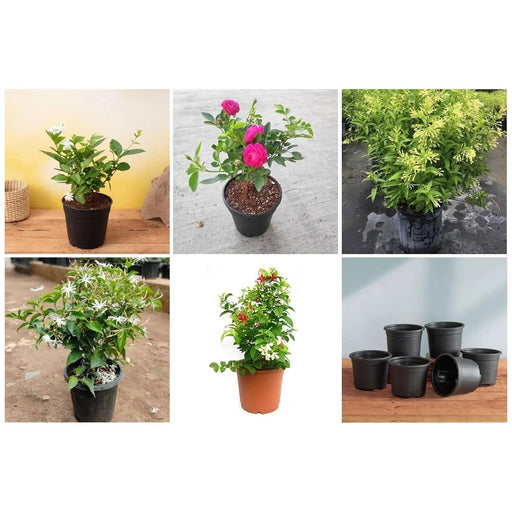
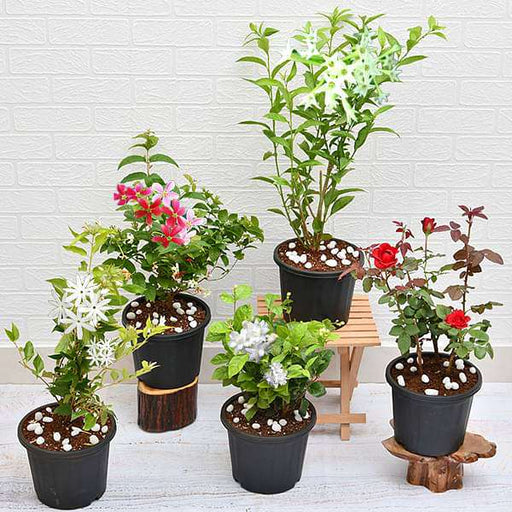 Save 30%
Save 30%
5 Best Fragrant Plants Transform your garden or indoor space into a fragrant paradise with our curated selection of the 5 Best Fragrant Plants. Th...
View full details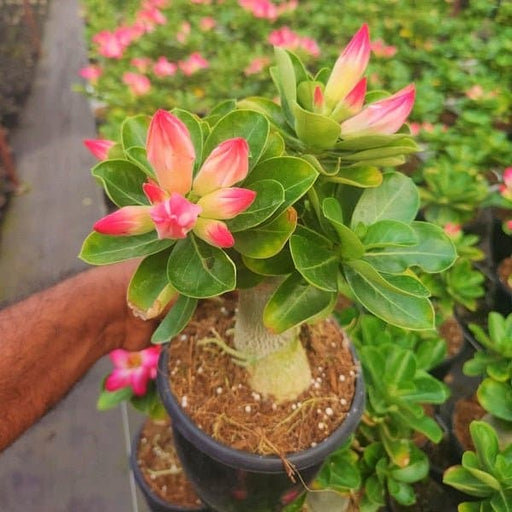
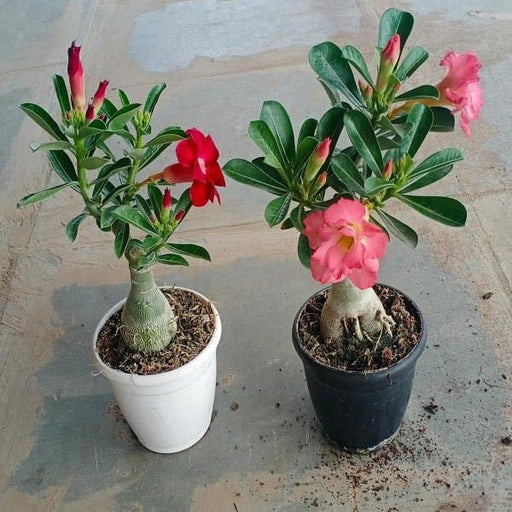 Save 24%
Save 24%
Set of 2 Bonsai Looking Grafted Adeniums Transform your indoor or outdoor space with our exquisite Set of 2 Bonsai Looking Grafted Adenium...
View full details Save 45%
Save 45%
Top 4 Die Hard Succulents Pack Transform your indoor or outdoor space with our Top 4 Die Hard Succulents Pack, featuring a curated selecti...
View full details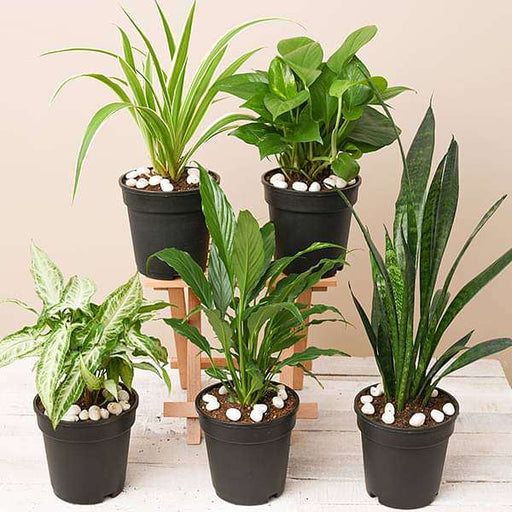
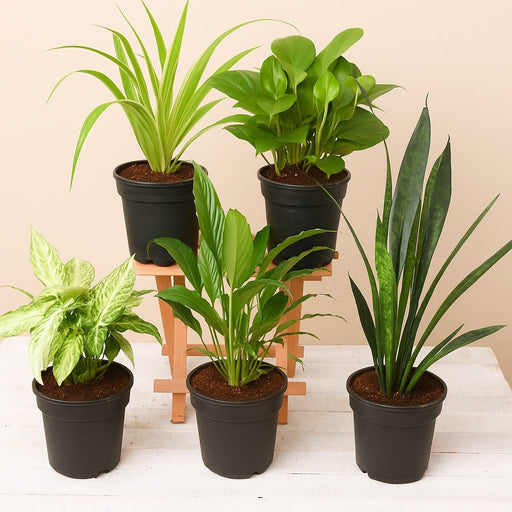 Save 30%
Save 30%
5 Best Indoor Plants Pack Transform your living space into a lush oasis with our '5 Best Indoor Plants Pack.' This carefully curated collection fe...
View full details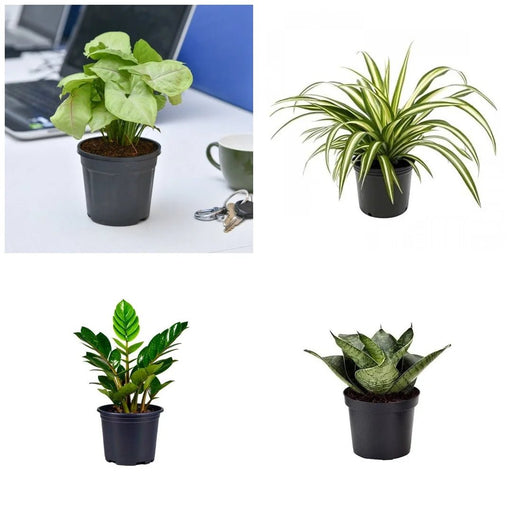
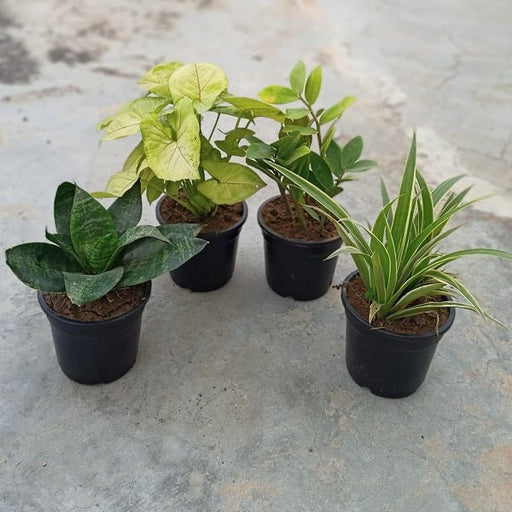 Save 25%
Save 25%
Set of 4 Evergreen Air Purifier Plant Pack Transform your indoor space into a lush, green oasis with our Set of 4 Evergreen Air Purifier Pla...
View full details| SrNo | Item Name |
|---|---|
| 1 | Alocasia macrorrhiza - Plant |
The Alocasia macrorrhiza, commonly known as the Giant Taro or Elephant Ear, is a stunning tropical plant native to Southeast Asia. With its large, heart-shaped leaves that can grow up to 3 feet long, this plant adds a dramatic touch to any indoor or outdoor space. Its lush foliage not only enhances aesthetic appeal but also contributes to improved air quality, making it a popular choice among plant enthusiasts.
What makes Alocasia macrorrhiza special is its impressive size and unique leaf structure, which can create a striking focal point in gardens or homes. This plant thrives in warm, humid environments, making it an ideal choice for those looking to bring a piece of the tropics into their living space. Its ability to adapt to various light conditions further enhances its appeal, allowing it to flourish in both bright and indirect light.
One of the standout features of Alocasia macrorrhiza is its remarkable growth rate. Under optimal conditions, it can grow several feet in a single season, making it a fast-growing addition to your plant collection. Additionally, its large leaves can capture and filter air pollutants, contributing positively to your indoor environment.
Alocasia macrorrhiza plays a significant role in its native ecosystem by providing habitat and food for various wildlife species. Its ability to filter air pollutants contributes to a healthier environment, making it a valuable addition to both indoor and outdoor spaces.
If you think caring for Alocasia macrorrhiza is like a walk in the park, think again! This plant is a diva that demands attention. It thrives in bright, indirect light and loves humidity like a cat loves a sunny spot. Water it when the top inch of soil is dry, but don’t drown it—this isn’t a swimming competition! With the right TLC, your Alocasia will reward you with stunning foliage that could make even the most seasoned plant parent swoon.
Ready to expand your plant family? Propagating Alocasia macrorrhiza is like playing plant matchmaker. You can do it through offsets or division. Just make sure you have a sharp knife and a steady hand—no one wants a plant surgery gone wrong! Once you’ve separated the roots, pot them up and watch as they grow into fabulous new plants. It’s like giving birth, but without the sleepless nights!
Ah, pests—the uninvited guests at your plant party. Alocasia macrorrhiza can attract spider mites, aphids, and mealybugs, which are about as welcome as a rainstorm at a picnic. Keep an eye out for these little troublemakers and act fast! Neem oil or insecticidal soap can be your best friends in this battle. Remember, a healthy plant is a happy plant, and a happy plant doesn’t have to deal with pests crashing its vibe.
The right soil is like a cozy blanket for your Alocasia macrorrhiza. It craves well-draining, nutrient-rich soil that allows its roots to breathe. A mix of potting soil, perlite, and orchid bark is like a five-star hotel for your plant. Avoid heavy soils that retain too much moisture—your Alocasia isn’t a swamp creature! With the right soil, your plant will flourish and show off its stunning leaves like a proud peacock.
Light is the lifeblood of your Alocasia macrorrhiza, but it’s a bit of a light snob. It prefers bright, indirect sunlight, so don’t go shoving it in a dark corner! Too much direct sun can scorch those beautiful leaves, while too little can leave it sulking in the shadows. Find that sweet spot, and your plant will reward you with vibrant foliage that’s the envy of all your friends.
If you want your Alocasia macrorrhiza to thrive, you better bring the humidity! This tropical beauty loves a moist environment, so consider misting it or placing it on a pebble tray filled with water. Think of it as a spa day for your plant. If your home is drier than a desert, a humidifier might just become your new best friend. Keep the humidity levels up, and your Alocasia will be living its best life.
Temperature is key for your Alocasia macrorrhiza, and it’s not a fan of extremes. Ideally, it likes to lounge in temperatures between 65°F and 80°F. Anything below 60°F, and it might just throw a tantrum. Keep it away from drafts and sudden temperature changes—this plant is not a fan of surprises! With the right temperature, your Alocasia will be as happy as a clam, showing off its gorgeous leaves.
Alocasia macrorrhiza is toxic if ingested. It contains calcium oxalate crystals, which can cause irritation and discomfort. So, while your plant may look like a tropical paradise, it’s best to keep it out of reach of curious little hands and paws. Educate your family about its toxic nature, and you’ll keep both your plant and loved ones safe.
Repotting your Alocasia macrorrhiza is like giving it a new apartment—sometimes, it just needs more space to stretch its roots! Aim to repot every couple of years or when it outgrows its current home. Choose a pot that’s one size larger and refresh that soil. Just be gentle with those roots; they’re sensitive souls! With a little care during repotting, your Alocasia will thrive and continue to grow into a magnificent specimen.
Beyond its stunning looks, Alocasia macrorrhiza brings a host of benefits to your home. It’s a natural air purifier, helping to filter out toxins and improve indoor air quality. Plus, its large, lush leaves can boost your mood and create a calming atmosphere. Who knew a plant could be both a beauty and a health guru? With Alocasia macrorrhiza in your space, you’re not just decorating; you’re enhancing your well-being!
Did you know there are different varieties of Alocasia macrorrhiza? From the classic green to the striking variegated versions, each brings its own flair to the table. Some have larger leaves, while others sport unique patterns that can make your plant collection pop. Exploring these varieties is like going on a treasure hunt—each one is a gem waiting to be discovered. So, why settle for just one when you can have a whole collection?
Alocasia macrorrhiza, also known as Giant Taro, is a tropical plant with stunning, large leaves that can make any room feel like a rainforest. It’s like Mother Nature’s oversized green umbrella, perfect for adding a touch of drama to your indoor jungle. Just don’t forget to give it a little love and humidity!
Caring for Alocasia macrorrhiza is like dating a diva; it requires attention! Keep it in bright, indirect light, water when the top inch of soil is dry, and maintain humidity. It loves a warm environment, so avoid cold drafts. Treat it right, and it’ll reward you with those fabulous leaves!
Alocasia macrorrhiza thrives in well-draining, rich potting soil. Think of it as a luxurious spa treatment for its roots! A mix of potting soil, perlite, and orchid bark will keep it happy and healthy. Just remember, soggy feet are a no-go; this plant prefers to keep its roots dry and fabulous!
Watering Alocasia macrorrhiza is a balancing act. Aim to water when the top inch of soil feels dry, usually every 1-2 weeks. But don’t drown it! Overwatering is like a bad breakup; it can lead to root rot. Keep an eye on the leaves; droopy ones signal it’s thirsty!
Yes, Alocasia macrorrhiza loves a good meal! Feed it with a balanced liquid fertilizer every 4-6 weeks during the growing season (spring and summer). Think of it as a gourmet dining experience for your plant. Just don’t overdo it; too much fertilizer can lead to a plant with a bad attitude!
Absolutely! Alocasia macrorrhiza is a fabulous indoor plant, bringing a tropical vibe to your home. Just ensure it gets bright, indirect light and plenty of humidity. It’s like having a mini vacation in your living room. Just be prepared for some serious leaf envy from your friends!
Yes, Alocasia macrorrhiza is toxic to pets, so keep it out of their reach. It contains calcium oxalate crystals, which can cause irritation and discomfort if ingested. Think of it as a plant with a “keep out” sign for furry friends. Better safe than sorry; your pet will thank you!
Alocasia macrorrhiza can grow quite large, reaching heights of up to 6 feet or more! It’s like the gentle giant of the plant world, with leaves that can span up to 3 feet. Just make sure you have enough space for this leafy superstar to strut its stuff without feeling cramped!
Alocasia macrorrhiza can attract pests like spider mites, aphids, and mealybugs. It’s like a plant magnet for unwanted guests! Keep an eye out for any signs of infestation and treat them promptly with insecticidal soap or neem oil. A little vigilance goes a long way in keeping your plant fabulous!
Propagating Alocasia macrorrhiza is like playing plant matchmaker! You can do this by dividing the rhizomes during repotting. Ensure each division has a few roots and leaves. Plant them in fresh soil, give them some love, and watch them grow into their own fabulous selves. It’s a family reunion worth having!
Alocasia macrorrhiza craves humidity levels of 60% or higher. It’s like a tropical vacation for your plant! If your home is drier, consider using a humidifier or placing a pebble tray with water nearby. Your plant will thank you with lush, vibrant leaves that scream, “I’m living my best life!”